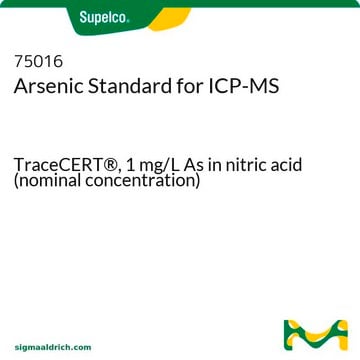General description
We are committed to bringing you greener alternative products, which adhere to one or more of The 12 Principles of Green Chemistry.This antibody is Preservative-free, produced without the harm or sacrifice of animals and exceptionally stable to allow for ambient shipping and storage if needed and thus aligns with "Waste Prevention", "Designing Safer Chemicals" and "Design for Energy Efficiency".
Click here for more information.
ZooMAb® antibodies represent an entirely new generation of recombinant monoclonal antibodies.Each ZooMAb® antibody is manufactured using our proprietary recombinant expression system, purified to homogeneity, and precisely dispensed to produce robust and highly reproducible lot-to-lot consistency. Only top-performing clones are released for use by researchers. Each antibody is validated for high specificity and affinity across multiple applications, including its most commonly used application. ZooMAb® antibodies are reliably available and ready to ship when you need them.
Specificity
Clone 1B10 is a ZooMAb® Rabbit recombinant monoclonal antibody that specifically detects Ras GTPase-activating protein-binding protein 1 (G3BP1). It targets an epitope within 25 amino acids from the internal region.
Immunogen
KLH-conjugated linear peptide corresponding to 25 amino acids from the internal region of human Ras GTPase-activating protein-binding protein 1 (G3BP1).
Application
Quality Control Testing
Evaluated by Western Blotting in HeLa cell lysate.
Western Blotting Analysis: A 1:10,000 dilution of this antibody detected G3BP1 in HeLa cell lysate.
Tested applications
Western Blotting Analysis: A 1:10,000 dilution from a representative lot detected G3BP1 in A549 and NIH3T3 cell lysates.
Immunohistochemistry (Paraffin) Analysis: A 1:100 dilution from a representative lot detected G3BP1 in human testis tissue sections.
Immunocytochemistry Analysis: A 1:100 dilution from a representative lot detected G3BP1 in A549 and NIH 3T3 cells.
Note: Actual optimal working dilutions must be determined by end user as specimens, and experimental conditions may vary with the end user
Target description
Ras GTPase-activating protein-binding protein 1 (UniProt: Q13283; also known as EC:3.6.4.12, G3BP-1, ATP-dependent DNA helicase VIII, hDH VIII, GAP SH3 domain-binding protein 1) is encoded by the G3BP1 (also known as G3BP) gene (Gene ID: 10146) in human. G3BP1 is an evolutionarily conserved, multi-domain protein with an N-terminal NTF2-like domain (aa 11-133), an acidic residue-rich region, PXXP motifs, an RNA-recognition motif (RRM; aa 340-415) and a C-terminal arginine-glycine-glycine (RGG) domain. It is ubiquitously expressed ATP- and magnesium-dependent helicase that plays an essential role in innate immunity. It is a member of the heterogeneous nuclear RNA-binding proteins and is also an element of the Ras signal transduction pathway. It binds specifically to the Ras-GTPase-activating protein by associating with its SH3 domain. In proliferating cells, it is localized in the cytoplasm and in resting cells it resides in cytosol and partially in the nucleus. It serves as a DNA-unwinding enzyme that exhibits preference for partially unwound 3′-tailed substrates and can also unwind partial RNA/DNA and RNA/RNA duplexes in an ATP-dependent fashion. It preferentially unwinds partial DNA and RNA duplexes having a 17 bp annealed portion and either a hanging 3′ tail or hanging tails at both 5′- and 3′-ends. G3BP1 undergoes phosphorylation exclusively on its serine residues. In its hypo-phosphorylated state it exhibits reduced endoribonuclease activity. RAS p21 protein activator 1 (RASA-1)-dependent phosphorylation of serine 149 is known to induce a conformational change that prevents its self-association and D5promotes partial nuclear localization. This ZooMAbZooMAb® recombinant monoclonal antibody, generated by our propriety technology, offers significantly enhanced specificity, affinity, reproducibility, and stability over conventional monoclonals. (Ref.: He, X., et al. (2021). Nucl. Acid Res. 19(8); 11323-11336; Liu, ZS., et al.(2019). Nat. Immunol. 20(1); 18-28; Tourrière, H., et al. (2001). Mol. Cell Biol. 21(22); 7747-7760).
Physical form
Purified recombinant rabbit monoclonal antibody IgG, lyophilized in PBS, 5% Trehalose, normal appearance a coarse or translucent resin. The PBS/trehalose components in the ZooMAb formulation can have the appearance of a semi-solid (bead like gel) after lyophilization. This is a normal phenomenon. Please follow the recommended reconstitution procedure in the data sheet to dissolve the semi-solid, bead-like, gel-appearing material. The resulting antibody solution is completely stable and functional as proven by full functional testing. Contains no biocide or preservatives, such as azide, or any animal by-products. Larger pack sizes provided as multiples of 25 μL.
Reconstitution
300 μg/mL after reconstitution at 25 μL per vial. Please refer to guidance on suggested starting dilutions and/or titers per application and sample type.
Storage and Stability
Recommend storage of lyophilized product at 2-8°C; Before reconstitution, micro-centrifuge vials briefly to spin down material to bottom of the vial; Reconstitute each vial by adding 25 μL of filtered lab grade water or PBS; Reconstituted antibodies can be stored at 2-8°C, or -20°C for long term storage. Avoid repeated freeze-thaws.
Legal Information
ZooMAb is a registered trademark of Merck KGaA, Darmstadt, Germany
Disclaimer
Unless otherwise stated in our catalog or other company documentation accompanying the product(s), our products are intended for research use only and are not to be used for any other purpose, which includes but is not limited to, unauthorized commercial uses, in vitro diagnostic uses, ex vivo or in vivo therapeutic uses or any type of consumption or application to humans or animals.





